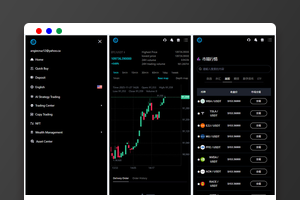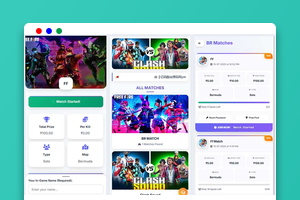下面由Laravel教程栏目带大家了解一下Laravel中的管道,分享一个Laravel中的管道的使用实例,希望对大家有所帮助!

从代码的角度介绍管道的实际使用方式。有关管道的说明,网上已有较多的篇幅介绍,自行查阅。 本篇博客是使用管道处理名字, 实现统一处理的目的。
背景: 目前能找到的使用管道的介绍也很多,大多停留在对其介绍和引导,真正的深入到代码的部分不多。根据介绍,使用管道也有一定的阻碍,这里分享一篇关于使用管道的详细的代码实例,仅供参考。 本篇介绍是自己真实使用的过程的代码摘录,亲自测试,真实可用。只为抛砖引玉,不喜勿喷。
一、控制器
路由器部分
Route::get('/pipe', ['as'=>'pipe', 'uses'=>'PipeController@index']);
控制代码
<?php
namespace App\Http\Controllers;
use App\Pipes\LeftWords;
use App\Pipes\RightWords;
use App\Pipes\BothSidesWords;
use Illuminate\Http\Request;
use Illuminate\Pipeline\Pipeline;
use App\User;
use Illuminate\Support\Str;
use Illuminate\Support\Facades\Hash;
class PipeController extends Controller
{
/* 定义管道
*
* 第一步处理
* 第二部处理
* 第三部处理
* */
protected $pipes = [
LeftWords::class,
RightWords::class,
BothSidesWords::class,
];
// 首页
public function index(Request $request){
$name = $request->input('name');
// $name = Str::random(10);
return app(Pipeline::class)
->send($name)
->through($this->pipes)
->then(function ($content) {
return User::create([
'name' => $content,
'email'=>Str::random(10).'@gmail.com',
'password'=>Hash::make('password'),
]);
});
}
}
二、管道部分
目录结构如下:
├─app │ │ User.php │ ├─Http │ │ ... │ │ │ ├─Models │ │ ... │ │ │ ├─Pipes │ │ │ BothSidesWords.php │ │ │ LeftWords.php │ │ │ RightWords.php │ │ │ │ │ └─Contracts │ │ PipeContracts.php
-
interface的代码 路径app/Pipes/Contracts/Pipe.php下的代码如下:<?php namespace App\Pipes\Contracts; use Closure; interface PipeContracts { public function handle($body, Closure $next); } -
三个管道的类的代码
LeftWords.php的代码<?php namespace App\Pipes; use App\Pipes\Contracts\PipeContracts; use Closure; class LeftWords implements PipeContracts{ public function handle($body, Closure $next) { // TODO: Implement handle() method. $body = 'left-'.$body; return $next($body); } }LeftWords.php的代码<?php namespace App\Pipes; use App\Pipes\Contracts\PipeContracts; use Closure; class RightWords implements PipeContracts{ public function handle($body, Closure $next) { // TODO: Implement handle() method. $body = $body.'-right'; return $next($body); } }BothSidesWords.php的代码<?php namespace App\Pipes; use App\Pipes\Contracts\PipeContracts; use Closure; class BothSidesWords implements PipeContracts{ public function handle($body, Closure $next) { // TODO: Implement handle() method. $body = '['.$body.']'; return $next($body); } }
这里我们使用管道默认的方法handle,你可以自定义方法名。像下面这样定义myHandleMethod为处理方法名称。
return app(Pipeline::class)
->send($name)
->through($this->pipes)
->via('myHandleMethod')
->then(function ($content) {
return User::create([
'name' => $content,
'email'=>Str::random(10).'@gmail.com',
'password'=>Hash::make('password'),
]);
});
你这样定义后,修改你的interface,同时修改你的实现类即可。
三、结果说明
访问http://localhost/pipe?name=lisa之后,能成功打印出获取的结果。User表内部,有数据保存成功。
{
"name": "[left-lisa-right]",
"email": "3riSrDuBFv@gmail.com",
"updated_at": "2020-09-05T05:57:14.000000Z",
"created_at": "2020-09-05T05:57:14.000000Z",
"id": 15
}
更多编程相关知识,请访问:编程视频!!
以上就是通过实例来了解Laravel中管道的使用方法的详细内容,更多请关注亿码酷站其它相关文章!
<!– –>通过实例来了解Laravel中管道的使用方法
–>通过实例来了解Laravel中管道的使用方法
—–文章转载自PHP中文网如有侵权请联系ymkuzhan@126.com删除
转载请注明来源:通过实例来了解Laravel中管道的使用方法
本文永久链接地址:https://www.ymkuzhan.com/45547.html
本文永久链接地址:https://www.ymkuzhan.com/45547.html
下载声明:
本站资源如无特殊说明默认解压密码为www.ymkuzhan.com建议使用WinRAR解压; 本站资源来源于用户分享、互换、购买以及网络收集等渠道,本站不提供任何技术服务及有偿服务,资源仅提供给大家学习研究请勿作它用。 赞助本站仅为维持服务器日常运行并非购买程序及源码费用因此不提供任何技术支持,如果你喜欢该程序,请购买正版! 版权声明:
下载本站资源学习研究的默认同意本站【版权声明】若本站提供的资源侵犯到你的权益,请提交版权证明文件至邮箱ymkuzhan#126.com(将#替换为@)站长将会在三个工作日内为您删除。 免责声明:
您好,本站所有资源(包括但不限于:源码、素材、工具、字体、图像、模板等)均为用户分享、互换、购买以及网络收集而来,并未取得原始权利人授权,因此禁止一切商用行为,仅可用于个人研究学习使用。请务必于下载后24小时内彻底删除,一切因下载人使用所引起的法律相关责任,包括但不限于:侵权,索赔,法律责任,刑事责任等相关责任,全部由下载人/使用人,全部承担。以上说明,一经发布视为您已全部阅读,理解、同意以上内容,如对以上内容持有异议,请勿下载,谢谢配合!支持正版,人人有责,如不慎对您的合法权益构成侵犯,请联系我们对相应内容进行删除,谢谢!





